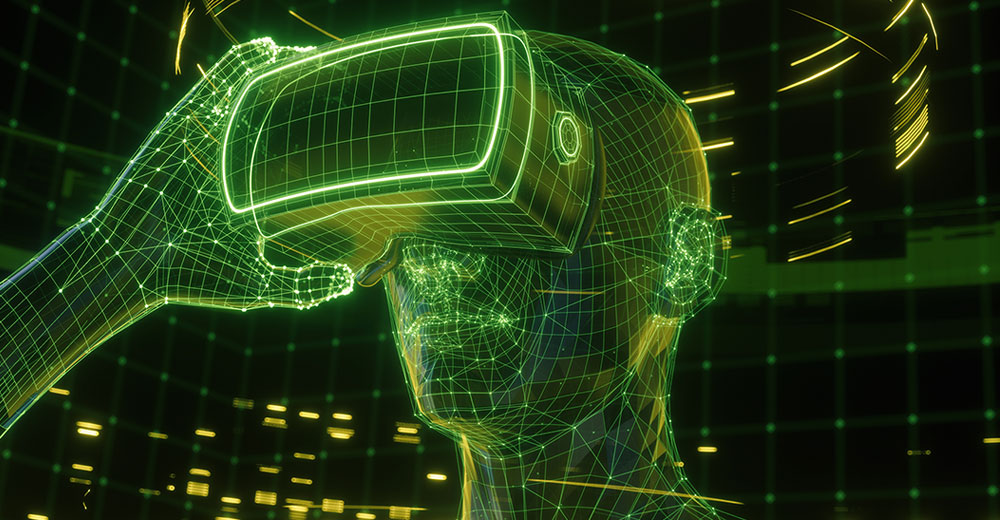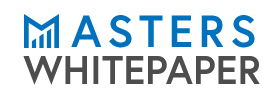Linux Foundation Takes on Metaverse, Physical World Mapping Challenges

The Linux Foundation (LF), one of the primary driving forces behind the continuing growth of open-source technology, is turning its attention to developing a better metaverse and creating a living digital record of the physical world.
In December, LF announced the Open Metaverse Foundation (OMF) with a mission to provide a collaboration space for diverse industries to work on developing open-source software and standards for an inclusive, global, vendor-neutral, and scalable metaverse.
Also in December, LF announced the formation of the Overture Maps Foundation (OMF) to build interoperable Open Map Data that allows developers to build new map services leveraging the combined contributions of Overture members.
The LF organization hopes the mapping plans will rally all forces to master the challenge posed by creating a living digital record of the physical world that no single organization can manage.
The newly formed OMF within the Linux Foundation will focus on initiatives spanning artificial intelligence, cloud and edge computing, digital assets, transactions, identity, networking, simulations, and security. The efforts will bring participating members to collaborate in creating open-source software and standards for an open, global, vendor-neutral, and scalable metaverse.
“We’re still in the early days of the vision for an open metaverse, and we recognize that many open source communities and foundations are working on vital pieces of this iterative puzzle,” said Royal O’Brien, executive director of the OMF, in the announcement.
“While the challenges may seem daunting, I’m energized by the opportunities to collaborate with a broad, global community to bring these pieces together as we transform this vision into reality,” he added.
Metaverse Organizational Plan
The OMF is organized into eight foundational interest groups (FIGs). The goal of each group is to enable a focused, distributed decision structure for key topics.
FIGs provide targeted resources and forums for identifying new ideas, getting work done, and onboarding new contributors. They are comprised of members from specific disciplines committed to advancing projects or scalable technologies within their topic and ensuring that code ownership of every identifiable subpart of projects.
For instance, the subdivisions could address and manage various elements such as GitHub.org, repository, subdirectory, API, test, issue, and public relations. The eight FIGS for the OMF are Users, Transactions, Digital Assets, Simulations and Virtual Worlds, Artificial Intelligence, Networking, Security and Privacy, and Legal and Policy.
The Metaverse offers exciting possibilities for revolutionizing the way we interact and engage. But it comes with immense technical challenges, noted Anni Lai, head of open source operations and marketing at Futurewei, as part of the announcement.
The Metaverse is not some expensive VR headset. It is not NFTs. It is not even Web3. The Metaverse is an open set of data standards that enables shared, accessible, persistent 3D experiences,” offered Vince McMullin, CEO of GenXP.

I don’t think the title of your article matches the content lol. Just kidding, mainly because I had some doubts after reading the article.
What’s up, I desire to subscribe for this weblog to take hottest updates, therefore where can i do it please help out.
Call-girls Brazil
Образовательный материал описывает разница между кракен зеркало и онион где зеркала это клир домены с редиректом а онион это полноценные адреса внутри Tor сети.
Can you be more specific about the content of your article? After reading it, I still have some doubts. Hope you can help me.
Platforma internetowa mostbet: zaklady przedmeczowe i na zywo, wysokie kursy, akumulatory, zaklady na sumy i handicapy, a takze popularne sloty i kasyno na zywo. Bonus powitalny, regularne promocje, szybkie wyplaty na karty i portfele.
Prodej reziva https://www.kup-drevo.cz v Ceske republice: siroky vyber reziva, stavebniho a dokoncovaciho reziva, tramu, prken a stepky. Dodavame soukromym klientum i firmam stalou kvalitu, konkurenceschopne ceny a dodavky po cele Ceske republice.
Вызов электрика https://vash-elektrik24.ru на дом в Москве: оперативный выезд, поиск и устранение неисправностей, установка розеток и выключателей, подключение техники, ремонт проводки. Квалифицированные мастера, точные цены, гарантия на работы и удобное время приезда.
University VSU named P.M. Masherov offers modern educational programs, a strong faculty, and an active student life. Practice-oriented training, research projects, and international collaborations help students build successful careers.
Анонимный онлайн-обменник КомКЕШ
предоставляет конфиденциальный
обмен цифровых активов без проверки документов.
Вы можете мгновенно
совершать обмен криптовалют, сохраняя приватность.
Наш сервис предлагает выгодные курсы
и доступность 24/7.
Выберите надежный
обмен криптовалюты с ComCASH и получите стабильный обмен.
[url=https://comcash.cc/ru/exchange/DOGE-SBERRUB/create]обмен dogecoin[/url]
[url=https://comcash.cc/ru/exchange/BTC-SBERRUB/create]обменять биткоин на сбербанк[/url]
[url=https://comcash.cc/ru/exchange/USDTTRC20-SBERRUB/create]сбербанк usdt[/url]
[url=https://comcash.cc/ru/comcash-knowledgebase/blog/read/43]вывод криптовалюты на карту сбербанка[/url]
[url=https://comcash.cc/ru/]купить matic за рубли[/url]
[URL=https://comcash.cc/ru/exchange/BTC-SBERRUB/create]как переводить биткоины на карту сбербанка[/URL]
[URL=https://comcash.cc/ru/exchange/BTC-SBERRUB/create]вывести биткоин на сбербанк[/URL]
[url=https://comcash.cc/ru/exchange/BTC-SBERRUB/create]обмен с бтк на сбер[/url]
[url=https://comcash.cc/]обменник monero[/url]
[url=https://comcash.cc/]обменник криптовалют без верификации[/url]
[url=https://comcash.cc/]анонимный обменник фото[/url]
[url=https://comcash.cc/]обмен xrp[/url]
[url=https://comcash.cc/]обменники криптовалют[/url]
[url=https://comcash.cc/]криптовалюта обменники[/url]
[URL=https://comcash.cc/ru/exchange/USDTTRC20-SBERRUB/create]обмен usdt 20 на сбер[/URL]
[URL=https://comcash.cc/ru/exchange/USDTERC20-SBERRUB/create]обменник usdt на карту[/URL]
[URL=https://comcash.cc/ru/exchange/USDTTRC20-SBERRUB/create]обмен usdt на сбер tether trc20 usdt в рублях[/URL]
Анонимный обменник крипты ComCASH
предоставляет конфиденциальный
обмен цифровых активов без KYC.
Вы можете быстро
совершать обмен криптовалют, сохраняя независимость.
Наш сервис предлагает минимальные задержки
и доступность 24/7.
Выберите конфиденциальный
обмен криптовалюты с ComCASH и получите максимальную приватность.
[url=https://comcash.cc/ru/exchange/BTC-SBERRUB/create]обмен биткоин сбербанк[/url]
[url=https://comcash.cc/ru/exchange/BTC-SBERRUB/create]обменять биткоин на сбербанк[/url]
[url=https://comcash.cc/ru/exchange/XRP-XMR/create]xrp xmr[/url]
[url=https://comcash.cc/ru/exchange/BTC-CASHRUB/create]обменять bitcoin на наличные rub[/url]
[url=https://comcash.cc/ru/exchange/USDTTRC20-SBERRUB/create]обменять usdt на сбербанк[/url]
[url=https://comcash.cc/]сервис обмена криптовалют[/url]
[URL=https://comcash.cc/ru/exchange/BTC-SBERRUB/create]обмен биткоин на рубли сбербанк[/URL]
[url=https://comcash.cc/ru/exchange/BTC-SBERRUB/create]обменник биткоин на сбербанк[/url]
[URL=https://comcash.cc/ru/exchange/BTC-SBERRUB/create]обменять биткоин на рубли в сбербанке[/URL]
[url=https://comcash.cc/]обмен криптовалюты на рубли без комиссии[/url]
[url=https://comcash.cc/ru/exchange/TONCOIN-CASHUSD/create]ton kyc[/url]
[url=https://comcash.cc/ru/exchange/USDTTRC20-SBERRUB/create]обмен usdt на рубли сбербанк[/url]
[url=https://comcash.cc/ru/exchange/BTC-CASHRUB/create]обменять btc на рубли[/url]
[url=https://comcash.cc/]обменять монеро на рубли[/url]
[URL=https://comcash.cc/ru/exchange/USDTTRC20-SBERRUB/create]обмен usdt trc20 на сбербанк[/URL]
[URL=https://comcash.cc/ru/exchange/USDTTRC20-USDTTRC20/create]usdt trc 20 обмен[/URL]
[URL=https://comcash.cc/ru/exchange/USDTTRC20-SBERRUB/create]1 usdt trc20 в рублях[/URL]
Новостной портал https://ua-today.com.ua с акцентом на достоверность: только проверенные источники, факты, комментарии экспертов и глубокая аналитика. Удобная лента событий, фильтры по темам, архив материалов и быстрый доступ к главному за день.
Женский портал https://womanblog.com.ua с актуальными темами: тренды моды и макияжа, здоровье, фитнес, питание, саморазвитие и вдохновляющие истории. Ежедневные обновления, рекомендации специалистов и подборки идей для повседневной жизни, карьеры и личного счастья.
Современный женский https://womanstyle.com.ua портал для тех, кто хочет успевать всё: стиль и красота, психология и отношения, материнство, дом, путешествия и работа. Практичные лайфхаки, чек-листы, подборки и мотивационные материалы, которые помогают заботиться о себе и жить в балансе.
Портал о ремонте https://remont-sam.com и строительстве: от подготовки проекта и сметы до отделки и декора. Подробные инструкции, обзоры инструментов, рейтинги материалов, фото-примеры и лайфхаки. Удобная навигация по темам помогает быстро найти нужное решение для вашего объекта.
Строительный портал https://sovetremont.com с практическими советами: ремонт квартир, строительство домов, инженерные системы, отделка, фасады, кровля и благоустройство. Руководства, видео, расчёты и рекомендации экспертов, которые помогают экономить время и деньги.
Онлайн-портал https://stroyinfo.com о строительстве и ремонте для владельцев квартир, домов и дач: полезные статьи, схемы, чек-листы, подбор материалов и техники, советы по отделке и инженерным системам. Всё, чтобы сделать ремонт своими руками или грамотно контролировать подрядчиков.
Все новости https://uanews24.com.ua Украины и мира — быстро, достоверно и понятно: события в политике, экономике, науке, культуре и спорте. Подробные обзоры, интервью и аналитика помогают увидеть полную картину происходящего. Ежедневные обновления и удобная навигация.
Сайт для женщин https://golosiyiv.kiev.ua которые ценят себя и своё время: полезные статьи о моде и уходе, психологии, детях, отношениях, работе и хобби. Подборки идей, гайды, чек-листы и вдохновляющие истории. Помогаем находить баланс между заботой о других и заботой о себе.
Сайт для женщин https://e-times.com.ua о жизни, красоте и вдохновении: мода, макияж, уход за собой, здоровье, отношения, семья и карьера. Практичные советы, обзоры, чек-листы и личные истории. Помогаем заботиться о себе, развиваться и находить новые идеи каждый день.
Журнал о животных https://myzoofriend.com советы по уходу за питомцами, здоровье, питание, воспитание и поведение. Обзоры кормов и аксессуаров, рекомендации ветеринаров, истории спасения и интересные факты о кошках, собаках и дикой природе.
Авто портал https://just-forum.com с полным набором разделов: новости, обзоры, тесты, подержанные авто, советы по покупке, эксплуатации и продаже автомобиля. Честные мнения экспертов, реальные отзывы, подборки лучших моделей и удобная навигация по маркам и классам.
Новостной портал https://mediasfera.com.ua Украины для тех, кто хочет быть в курсе: свежие публикации, разбор ключевых событий, экспертные оценки и подробные материалы о политике, экономике и обществе. Быстрые обновления, удобная навигация и проверенная информация.
Новости Украины https://mediaportal.com.ua в удобном формате: лента последних событий, разделы по темам, авторские колонки и аналитика. Освещаем политику, экономику, безопасность, социальные вопросы и международные отношения. Портал для тех, кто хочет получать полную картину дня.
Женский сайт https://loveliness.kyiv.ua с практичным контентом: уход за кожей и волосами, стильные образы, дом и уют, дети, работа и финансы. Полезные рекомендации, экспертные материалы и вдохновение без лишней «воды». Удобная навигация по рубрикам и регулярные обновления.
Универсальный авто https://kolesnitsa.com.ua портал для водителей и будущих владельцев: обзоры автомобилей, сравнение комплектаций, тест-драйвы, советы по ТО и ремонту, подбор шин и аксессуаров. Актуальные новости, аналитика рынка и материалы, которые помогают делать осознанный выбор.
Reading your article helped me a lot and I agree with you. But I still have some doubts, can you clarify for me? I’ll keep an eye out for your answers.
Онлайн новостной https://expressnews.com.ua портал для тех, кто хочет быть в курсе: свежие новости, обзоры, спецпроекты и авторские материалы. Политика, бизнес, общество, наука, культура и спорт — всё в одном месте, с понятной подачей и регулярными обновлениями 24/7.
Украинский новостной https://medicalanswers.com.ua портал: главные новости, расширенные обзоры, разбор решений власти, ситуации на фронте и жизни граждан. Фото, видео, инфографика и мнения экспертов помогают глубже понять происходящее в Украине и вокруг неё.
Портал о технологиях https://technocom.dp.ua новости IT и гаджетов, обзоры смартфонов и ноутбуков, сравнения, тесты, инструкции и лайфхаки. Искусственный интеллект, кибербезопасность, софт, цифровые сервисы и тренды — простым языком и с пользой для читателя.
Мужской портал https://phizmat.org.ua о стиле, здоровье, отношениях и деньгах. Свежие новости, честные обзоры гаджетов и авто, тренировки и питание, подборки фильмов и игр, лайфхаки для работы и отдыха — без воды и кликбейта. Советы, инструкции и тесты каждый день.
Туристический портал https://prostokarta.com.ua о путешествиях по России и миру: маршруты, города и страны, советы туристам, визы и перелёты, отели и жильё, обзоры курортов, идеи для отдыха, лайфхаки, личный опыт и актуальные новости туризма.
Срочный эвакуатор Дмитров: оперативный выезд, подача от 20 минут. Перевозка автомобилей после ДТП и поломок, межгород, бережная транспортировка. Работаем круглосуточно, без скрытых доплат, принимаем заявки в любое время.
Женский журнал https://eternaltown.com.ua о стиле, красоте и здоровье. Мода и тренды, уход за кожей и волосами, отношения и психология, дом и семья, карьера и саморазвитие. Полезные советы, подборки, интервью и вдохновение каждый день.
La plateforme 1xbet burkina: paris sportifs en ligne, matchs de football, evenements en direct et statistiques. Description du service, marches disponibles, cotes et principales fonctionnalites du site.
Application mobile 1xbet apk. Paris sportifs en ligne, football et tournois populaires, evenements en direct et statistiques. Presentation de l’application et de ses principales fonctionnalites.
Your article helped me a lot, is there any more related content? Thanks! https://www.binance.com/register?ref=IHJUI7TF
Образовательный блог https://educationruss.ru об обучении за границей. Университеты и колледжи, языковые курсы, условия поступления, стоимость, документы и жизнь студентов. Полезные статьи и рекомендации для абитуриентов и родителей.
The whole summary is here: https://teletype.in/@wisefull_fool/awmndjwzelw
Современная Стоматология в Воронеже лечение кариеса, протезирование, имплантация, профессиональная гигиена и эстетика улыбки. Квалифицированные специалисты, точная диагностика и забота о пациентах.
Все о медицине https://zapisnapriemrostov.ru и здоровье в одном месте! Получите доступ к достоверным статьям, рекомендациям специалистов и полезным лайфхакам для поддержания отличного самочувствия. Будьте в курсе и живите полной жизнью!
Строительство и ремонт https://ctoday.ru всё, что нужно знать. Планируете стройку или обновление? Наш сайт – ваш надежный помощник. Актуальная информация о материалах, технологиях, дизайне и юридических аспектах. С нами ремонт станет проще и приятнее!
Все о провайдерах https://providers.by Беларуси! Актуальные новости, честные отзывы пользователей и детальные обзоры тарифов. Поможем выбрать лучшего интернет-провайдера, анализируем рынок и тенденции. Будьте в курсе всех изменений!
Сияющая кожа https://omaske.ru и роскошные локоны – легко! Откройте секреты природы для красоты. Наши домашние маски для лица и волос подарят вам натуральный уход, глубокое питание и видимый результат. Забудьте о химии, почувствуйте силу трав и фруктов!
Красивый интерьер https://moidomiks.ru своими руками — идеи, советы и пошаговые инструкции для дома и квартиры. Декор, отделка, планировка и сочетание цветов. Помогаем создать уютное и стильное пространство без лишних затрат.